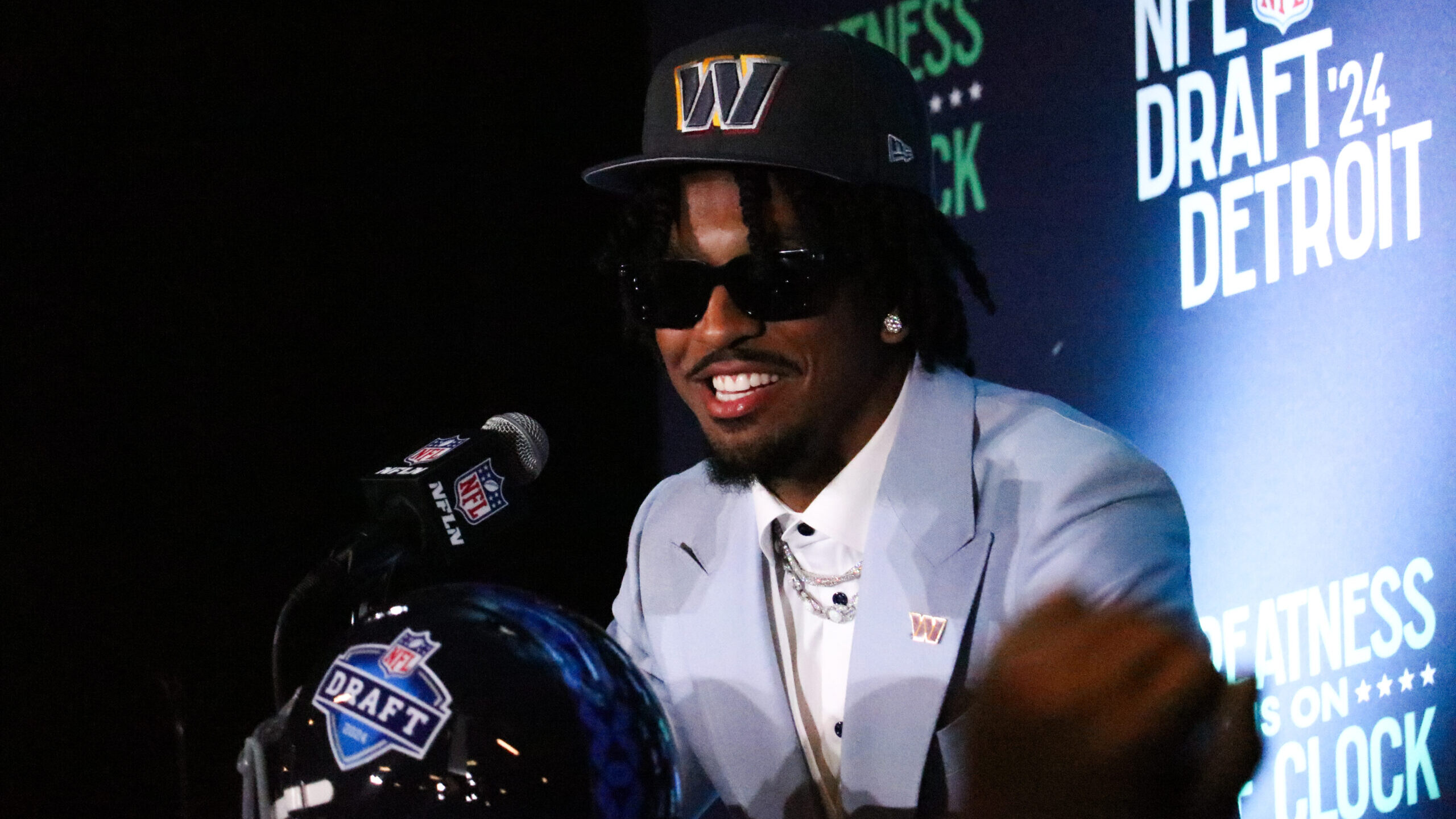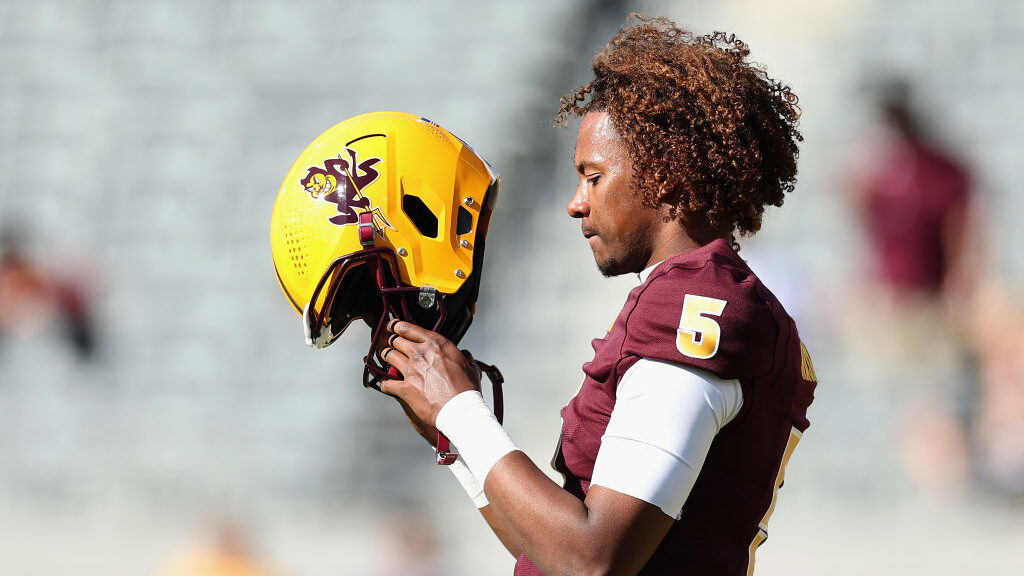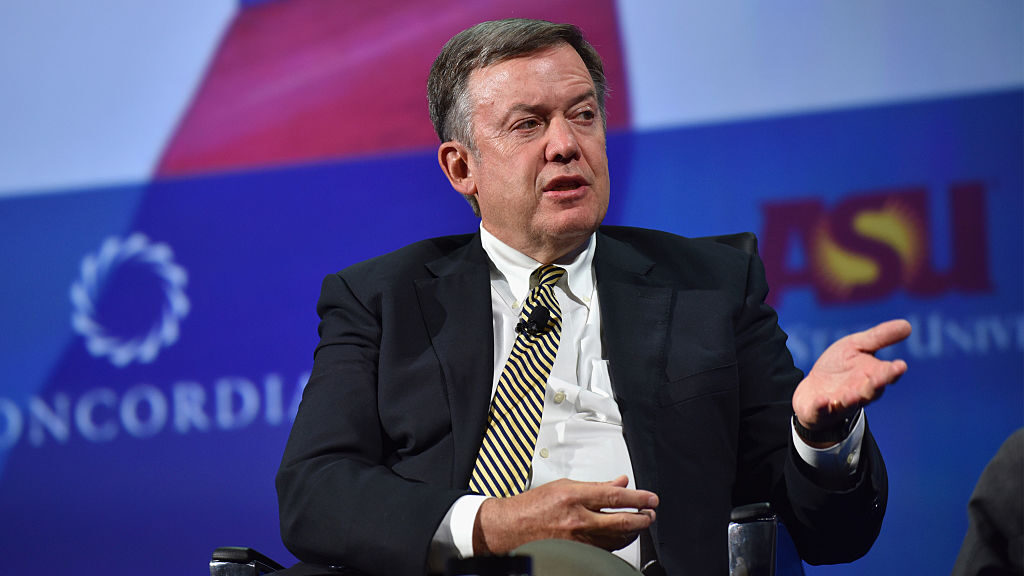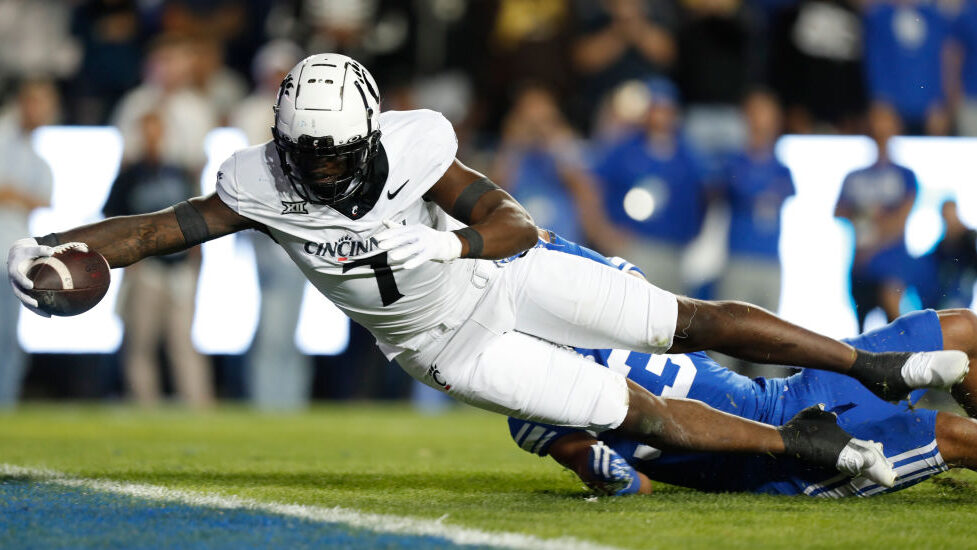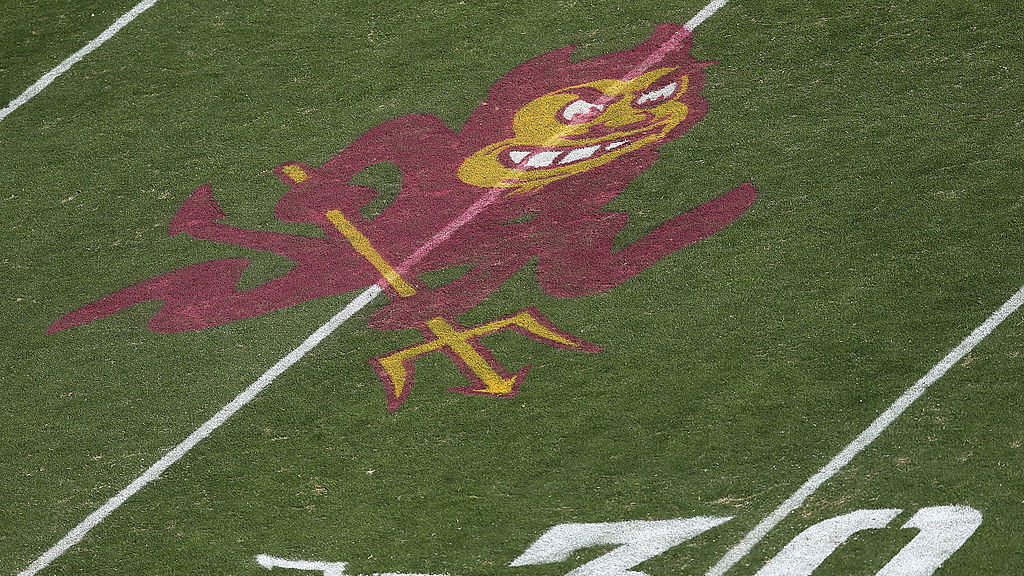AP story of the year: Demise of Pac-12 ushers in super conference era
Dec 18, 2023, 8:30 PM
The commissioners from three of the remaining power conferences in college sports appeared together in a crowded convention center ballroom and were asked to ponder what was wrought by three tumultuous years of realignment that culminated in the destruction of a 108-year-old institution.
“Obviously, not happy about the ultimate outcome to the Pac-12, but I’m in this position to give us the best options and future possible and we took advantage of the moment,” Big 12 Commissioner Brett Yormark explained during the session in Las Vegas.
That moment came over a span of six weeks this past summer. The Pac-12 was ripped apart and redistributed by its competitors, regardless of geography. The stunning demolition, set in motion a year earlier, was accelerated when the Pac-12 couldn’t secure a media rights deal to match its competitors.
The redrawing of the college sports map and demise of the Pac-12, a conference that claims the most NCAA championships and a legacy that includes the likes of Jackie Robinson, Bill Walton, Aaron Rodgers, Katie Ledecky, Tiger Woods and Cheryl Miller, made conference realignment The Associated Press Sports Story of the Year.
All of the moves by 2023 — and it was hard to keep count — will take effect in 2024, which will go down as one of the most transformative in the history of college athletics.
Oregon and Washington pledged to join the Big Ten, where Southern California and UCLA had already committed. Arizona, Arizona State, Colorado and Utah fled for the Big 12. Stanford and California found a lifeline in the Atlantic Coast Conference, a league with all its football-playing members currently in the Eastern time zone.
The four new West Coast Big Ten schools will be no closer than 1,500 miles from any of their new conference rivals.
Along with Texas and Oklahoma relocating from the Big 12 to the Southeastern Conference, all will join their new leagues before the start of next college football season.
“These are seismic moves,” former Fox Sports executive Bob Thompson said.
The end of the Pac-12 ushered in the super conference era and laid bare the bottom line of college sports.
“I don’t know what the institutions that are involved will say was the motivation, but it was money in every case,” former Big 12 Commissioner Bob Bowlsby said.
Next year, the Big Ten will have 18 schools, the Big 12 and SEC 16 each and the ACC 17 football-playing members, including SMU in Dallas. The Pac-12 is likely to survive with Oregon State and Washington State rebuilding the conference, but it will no longer reside among college sports’ super wealthy.
The Power Five is now a Power Four, but within that there is a Big Two. The Big Ten and SEC now have media rights deals that will allow them to provide yearly payouts to their members of upwards of $70 million. The ACC and Big 12 are hoping to stay within $30 million per year per school of those stratospheric numbers.
This all comes as the prospect of major college football players being directly paid by schools becomes more realistic. Just two weeks ago, NCAA President Charlie Baker proposed a plan to do exactly that.
“How much of the realignment moves are to position these universities for better success in the NIL world?” Thompson asked.
The frantic culmination of this round of realignment came from late July to early September, but the first domino was tipped in the summer of 2021 when it was revealed that Texas and Oklahoma were bolting the Big 12 for the SEC. That, said ACC Commissioner Jim Phillips, cleared the decks for schools eager to “take advantage of free agency.”
When the best the Pac-12 could do was a partnership with Apple that had a smaller annual guarantee than those of the ACC and Big 12, it sent schools shopping for a better deal.
“I don’t know that the four members that came to the Big 12 were moving toward something as much as they were trying to ensure that they didn’t go down with the ship, relative to the Pac-12,” Bowlsby said.
Conference realignment has been a part of college sports for about as long as games have been game on campus, primarily driven by schools and leagues jockeying for prestige, better competition and more robust revenue streams.
The most recent round of realignment felt more predatory. Survival for the fittest.
“In short, I think it was unnecessary,” Bowlsby said. “I don’t I don’t think the college athletics ecosystem is better with the absence of the Pac-12.”
The top of college sports should be heading into a few years of relative peace when it comes to realignment. Each of the remaining power conferences is locked into a media rights deal through at least the 2029-30 school year.
Thompson said he believes the future of major college football could be a super league similar to what has been proposed in European soccer.
“So, let’s say it’s the top 40 brands or the top whatever brands in football only, they go off and they do the super league and everything else stays at the conference level,” Thompson said. “People may decide that maybe that regionality we had a while ago wasn’t a bad thing for all the other sports.”
A new competitive reality is also coming to college football and it could be harsh for some schools.
“I think there are some in the larger conferences that will clearly be marginalized, and the money won’t be worth it because they’ll there’ll be traditional losers on a regular basis,” Bowlsby said. “And I think there will be institutions that have been traditional winners that will turn into institutions that are playing in the middle of the pack most of the time, that’s going to be a big adjustment.”



